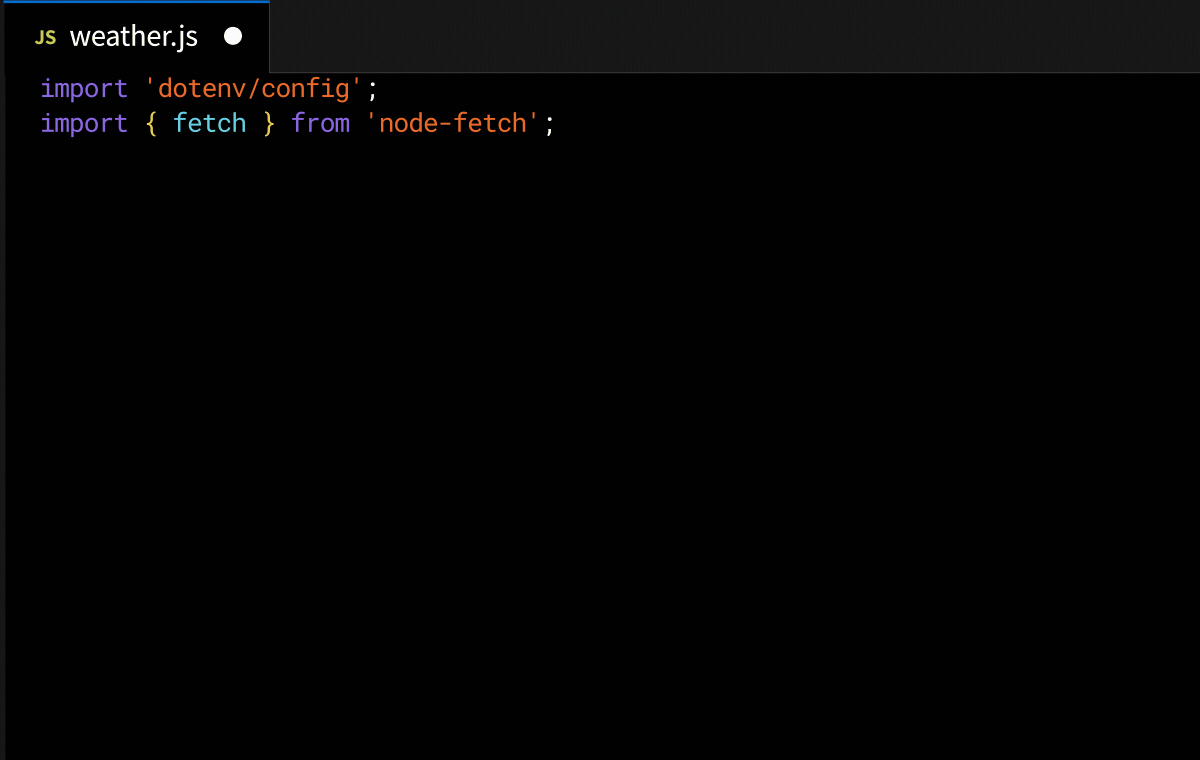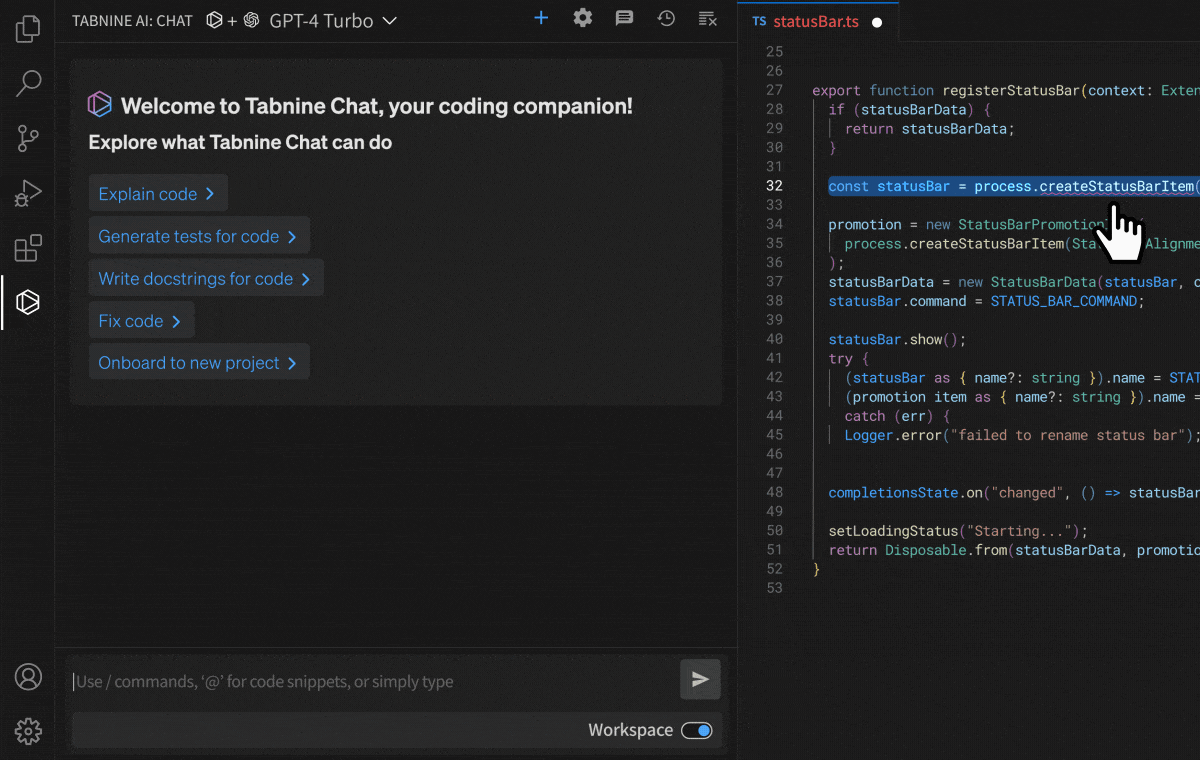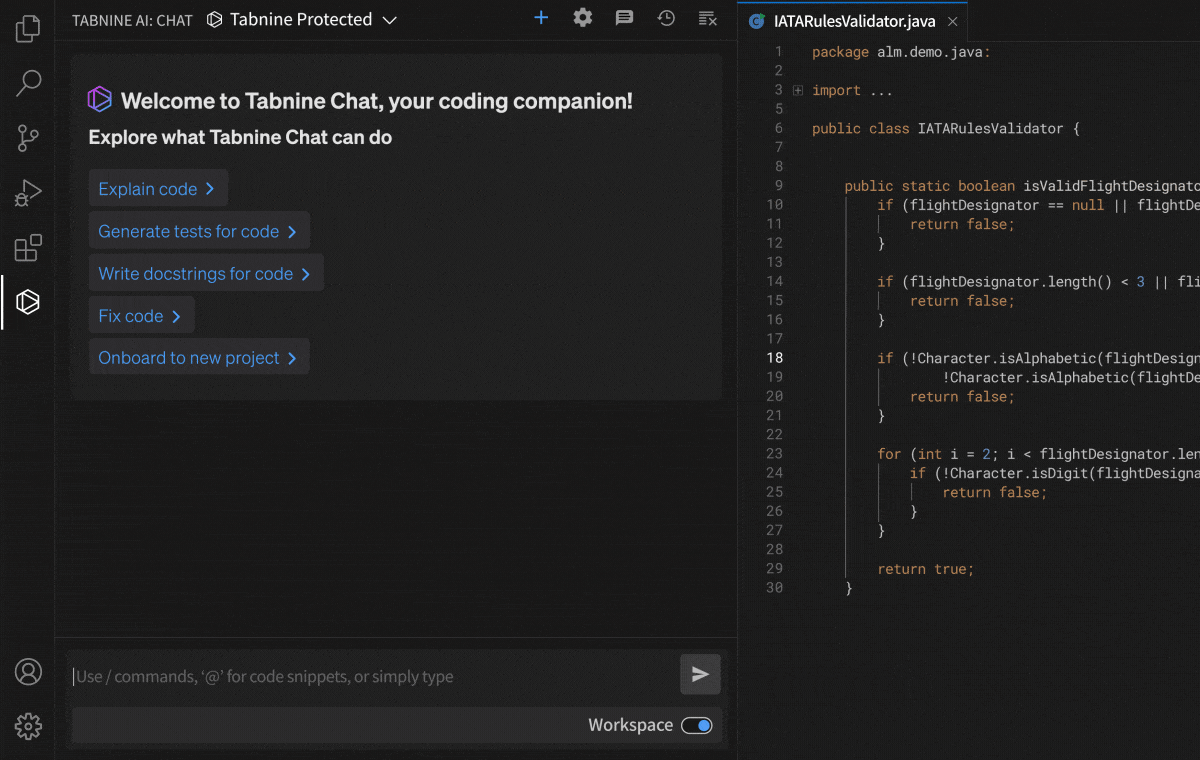Table of contents

Pair programming is a practice that involves two programmers working simultaneously on the same code, providing guidance and assistance to each other. AI pair programming uses artificial intelligence to make pair programming more accessible.
In this setup, an AI system, such as Tabnine, acts as a virtual programming partner, providing real-time code suggestions, debugging assistance, and learning support. This addresses the limitations of traditional pair programming, such as scheduling conflicts and mismatched skill levels, by offering consistent and immediate feedback.
In AI pair programming, the AI assistant learns from the coding patterns and practices of the developer it’s pairing with, offering context-aware suggestions. It integrates into existing development environments, ensuring minimal workflow disruption while maximizing productivity.
This is part of a series of articles about AI coding tools.

Here are a few limitations of traditional pair programming and how AI provides a solution:
Pair programming is inherently inefficient because two programmers work on the same task, limiting productivity. In addition, aligning the availability of two developers can be complex, especially when dealing with different time zones or personal schedules.
How AI helps
AI eliminates the need for real-time coordination by acting as an always-available partner. Developers can work at their own pace and receive instant feedback and suggestions from the AI, ensuring uninterrupted progress and enhancing productivity.
Many development organizations don’t have access to real-time, interactive platforms that allow developers to seamlessly share their work. Without tools that support live code sharing and simultaneous editing, programmers rely on less efficient methods of collaboration, such as exchanging code snippets via email or messaging apps.
How AI helps
AI pair programming tools integrate into existing development environments, providing seamless real-time collaboration features such as live code sharing and simultaneous editing.
When one programmer is much more experienced than the other, the learning curve for the less experienced programmer can slow down the development process. This imbalance may result in the more knowledgeable partner dominating the session, reducing opportunities for meaningful contributions from the less experienced programmer. The more experienced programmer might find themselves spending more time mentoring and less time engaging in productive coding.
How AI helps
AI provides context-aware suggestions and real-time guidance, tailored to the individual developer’s skill level. This personalized assistance helps less experienced programmers learn and contribute more effectively, while also allowing seasoned developers to focus on more complex tasks rather than spending time on mentoring.
Language differences, varying communication styles, and technical jargon can create misunderstandings between partners, making it more difficult to work productively on problem-solving and code development. In remote settings, nonverbal cues are absent, making it harder to convey nuances. Latency issues, poor audio quality, and interruptions during video calls can disrupt the flow of ideas and make detailed technical discussions challenging.
How AI helps
AI tools offer consistent, clear, and unambiguous suggestions and feedback, reducing the risk of miscommunication. By providing real-time, text-based guidance directly within the development environment, AI helps avoid communication gaps.
One significant challenge in traditional pair programming is the onboarding process for new developers. New hires often face a steep learning curve, needing to understand existing codebases, team practices, and project-specific technologies. Traditional pair programming can be resource-intensive, requiring experienced developers to spend substantial time mentoring newcomers.
How AI helps
AI pair programming tools like Tabnine streamline the onboarding process by providing instant, context-aware code suggestions and explanations. This helps new developers understand the codebase and coding standards without constant oversight from senior developers. Additionally, AI can provide immediate feedback and direct to relevant learning resources.
Tabnine is the AI code assistant tailored to you and your teams that works within the IDEs you already use. Tabnine eliminates mundane tasks and enhances developer productivity by providing AI code generation inside the IDE, so you can focus on more interesting and more valuable work.
It leverages large language models (LLMs) to analyze the context of the code being written, offering relevant, personalized, language-specific recommendations.
Beyond basic code completion, Tabnine understands coding patterns and project nuances, allowing it to predict the next steps and automate repetitive tasks. It also has an in-IDE chat agent that can generate code, documentation, unit tests, and assist with debugging, extending, and refactoring existing code, significantly accelerating both the generation of new features and maintenance. Tabnine acts like a virtual pair programmer by generating code like an engineer on your team would. It assists developers with routine tasks and accelerates solving complex problems, simplifying the full software development life cycle.
Tabnine integrates into existing development workflows, working seamlessly within the IDE without requiring a context switch, making it an “always on” automated pair programmer. It also provides highly personalized AI code generations based on context from inside your IDE, connection into your codebases (e.g., Bitbucket, Gitlab, GitHub, or any git-based repository), coaching you provide to enforce coding standards, and fine-tuning the underlying model based on your data for the ultimate level of personalized coding performance.
Here are four ways Tabnine can transform day-to-day software development.
Tabnine offers real-time code suggestions that enhance coding efficiency by predicting what developers might write next and providing accurate completions. By analyzing the code context and previous patterns, Tabnine suggests relevant snippets, methods, and variables, reducing the need for manual typing and minimizing syntax errors. This can significantly speed up the coding process and reduce cognitive load, allowing developers to focus on higher level problem-solving rather than syntax and boilerplate code.

Tabnine speeds up the code review and debugging process by automatically identifying potential errors and suggesting fixes. This allows developers to correct issues in real time, reducing the time traditionally spent on manual debugging. By integrating with the IDE, Tabnine highlights discrepancies and logical errors as they occur.
Tabnine was trained on a carefully vetted dataset of high-quality code, and its suggestions for code improvement are based on a deep understanding of coding best practices and patterns. This aids in maintaining high-quality code standards and helps educate developers on optimal coding techniques. Tabnine streamlines the review process and improves code quality, ensuring that best practices are followed consistently across the team.

Tabnine offers contextual insights and explanations for its code suggestions, serving as a useful resource for less experienced developers. It allows them to understand the rationale behind certain coding practices and patterns. As they interact with Tabnine, they receive on-the-spot guidance that accelerates their learning curve.
This interactive learning process also helps promote a culture of continuous improvement within development teams. By providing real-time feedback and suggestions, Tabnine acts as a virtual mentor that enhances coding skills both for beginners and experienced developers. This provides valuable educational support, helping new developers get up to speed quickly while continuously improving the skills of more experienced team members.

Tabnine helps developers customize code for various platforms, addressing one of the key challenges they face when working on cross-platform projects. By understanding the nuances of different coding environments and languages, Tabnine provides tailored suggestions that adhere to platform-specific standards and practices.
Tabnine’s ability to adapt its recommendations based on the target platform reduces the learning curve associated with new technologies or frameworks. Developers can easily transition between projects with different requirements. This enables smoother cross-platform development, ensuring that code is optimized for each environment, and reducing the friction developers often face when dealing with multiple platforms.
Here are some tips for making the most of Tabnine’s AI capabilities for pair programming.
Tabnine supports a range of IDEs, including VS Code, IntelliJ, Visual Studio, Android Studio, AppCode, CLion, GoLand, Neovim, PhpStorm, PyCharm, Rider, RubyMine, WebStorm, and Eclipse, and can be deployed in seconds by adding an IDE plug-in. Teams can use Tabnine within their existing development workflow to maintain the flow of work while benefiting from AI assistance. Our experience shows this can dramatically improve developer productivity.
Tabnine is an effective tool for onboarding new developers and training existing developers on new technologies. It accelerates the learning process by providing context-aware code suggestions and explanations directly within the IDE. New developers can quickly adapt to project standards and practices, reducing the ramp-up time typically required.
For existing developers, Tabnine helps them stay updated with the latest programming techniques and best practices. It serves as a continuous learning platform, offering insights and guidance on new frameworks and technologies. This ensures that the team remains proficient and capable of handling evolving technical challenges.
Tabnine’s AI capabilities can help maintain consistency in coding practices and style across entire projects. By learning from the collective input of a development team, it ensures that suggestions align with the project’s established coding standards. This is vital for large teams or projects where maintaining a consistent codebase can be challenging.
Tabnine promotes best practices by offering suggestions that fit the immediate context while adhering to industry standards and guidelines. This helps in elevating the quality of code and ensuring that everyone, including less experienced team members, contribute high-quality, consistent code.
Tabnine supports more than one million developers across companies in every industry. Beyond pair programming, it supports numerous use cases including software testing, code refactoring, and code documentation.
Unlike generic coding assistants, Tabnine is the AI that you control:
It’s private. You choose where and how to deploy Tabnine (SaaS, VPC, or on-premises) to maximize control over your intellectual property. Rest easily knowing that Tabnine never stores or shares your company’s code.
It’s personalized. Tabnine delivers an optimized experience for each development team. It’s context-aware and delivers precise and personalized recommendations for code generation, code explanations, guidance, and for test and documentation generation.
It’s protected. Tabnine is built with enterprise-grade security and compliance at its core. It’s trained exclusively on open source code with permissive licenses, ensuring that customers are never exposed to legal liability.
Learn how to use Tabnine AI to analyze, create, and improve your code across every stage of development:
Try Tabnine for free today or contact us to learn how we can help accelerate your software development.